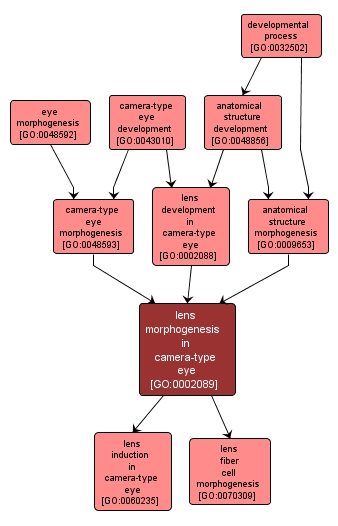GO TERM SUMMARY
|
| Name: |
lens morphogenesis in camera-type eye |
| Acc: |
GO:0002089 |
| Aspect: |
Biological Process |
| Desc: |
The process by which the anatomical structures of the lens are generated and organized. Morphogenesis pertains to the creation of form. The lens is a transparent structure in the eye through which light is focused onto the retina. An example of this process is found in Mus musculus. |
Synonyms:
- lens morphogenesis
- lens morphogenesis in camera-style eye
|














